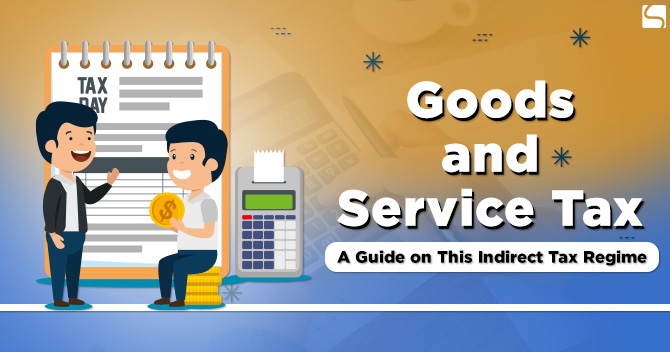GST Taxation In India

Swarit Advisors | Updated: May 16, 2018 | Category: GST
GST stands for Goods and service tax which is taxed indirectly hence an indirect tax or a consumption tax applied on the goods sold and services provided. GST is involved in every step of the production process of goods or services but is refunded to all the involved parties in the sequence or chain of a process of production except for the last or the final consumer.
Goods and services are divided for taxing in 5 slabs and is collected in 0% 5% 12% 18% 28%.
Alcohol and alcoholic drinks or alcohol-containing beverages, as well as petroleum products, are separately taxed by state government individually. For precious and semi-precious stones a special rate of 0.25% is applied while on gold it is at the rate of 3%
Other rates on top of 28% GST are applicable over soda or carbonated drinks, tobacco and its products as well as luxury cars. Before GST period the taxation on most goods used to be upto 26.5% however after implementation of GST it has gone down to 18% for a tax range.
Table of Contents
GST Implementation of goods and services tax
The GST implementation came into effect from July 1st 2017 via 101 amendments of the Indian constitution by BJP government under PM Narendra Modi. The tax replaced multiple existing taxes under both state and central government. The goods and services tax implementation have simplified the process of indirect taxation by a unified tax which is expected to change and reshape the Indian 2.6 trillion dollar economy dramatically.
What Are The Schemes of GST Taxation?
A single goods and services tax or GST has replaced several of the taxes and levies that includes the central excise duty service taxes and the additional customs duty’s surcharge and value-added state-level taxes. Other applications which were on interstate transport of the supply goods has also been done under GST.
India adopt GST in dual way model which means that taxing is supposed to be administered by both state government and union government. The transactions that are made in the single state are applied to central goods and services tax i.e CGST by the central government and the state goods and services tax SGST by the state government. However, for the interstate transport transactions for the imported goods and services, an IGST or integrated goods and services tax is applied by the central government.
GST is a consumption-based tax hence the tax is applicable unto the consumer or the region or destination the goods and services are consumed in rather than the destination or state the goods and services were produced in.
The IGST has made the tax collection for the state governments more complicated because it disables them from collecting the tax owed to them directly from the central government while earlier they only had to deal with only one government for collection of the tax revenue.
What Are the Five Laws of GST Taxation in India?
The GST tax law in India is a unified taxation scheme with multiple stages and destination-based tax law which is applied on every stage of value addition.
In other words, it’s an indirect tax application over the goods and services supply. GST law has now replaced the several indirectly applicable taxes that already exist in India. The GST is a single indirect tax on the entire country.
The laws
- CGST or the central goods and services tax.
- SGST or the state goods and services tax
- IGST or the integrated goods and services tax
- The GST compensation to the state law
- UTGST or the union territory good and services tax.
In the central GST law, the rules manage the mix up of all applicable taxes on goods and services as well as their collection and plans.
Whereas under the state GST law there is bargaining at the state level which is 29 states including two union territories which are Delhi and Pondicherry.
What Is The GST Assembly of Administration?
However, the union territory GST law fuse arrangements of central GST and implements it onto the remaining union regional areas which are beyond the lined territories. And the coordinated GST manage the export-import exchange between the two states or union territory regions.
Any differences or counter-opinion or debate if comes up under IGST or integrated goods and services tax will be judged by the central and/or by the state which is any other than the involved parties in the debate or dispute.
The conclusion of GST Laws
The conclusion here is that the GST compensate for the state. The law manages to keep up with the money paid in form of remuneration cess for paying back to the state which had incurred the losses for the initial first five years of GST implementation. GST Taxation is in dynamic state tax which can have different tax rates on each item, for example, a wallet and a luxury car are not conceivable also not at all recommended because the respective group of the consumer is different for different goods.
As mentioned by the minister of Finance Mr Arun Jaitley[1] during a LokSabha session dated March 29th 2017 that the 0% take shall be taken on grains whereas other tax slabs are 5%, 12%, 18%, 28% respectively.
These tax sections are applied in such a way that taxation is applied only in these percentage slots, for example, if a product was taxed at the rate of 11% or 13% then it will now be under 12% slot because it is closest to the number of respective slots.
Tax on harmful products
These sin products or the products that are otherwise harmful to health and well being of people like tobacco and tobacco products such as cigarettes which earlier used to have taxation up to 40% to 65% will now only have 28% GST because that’s the only last slot of percentage for taxing is available now and by 28% rate remuneration cess will be added. And also additional sum over the applied 28% tax charged on the extravagant items or the harmful items to people as well as to environments like coal or charcoal will be likewise added to the compensatory cess.
Read, Also: How is GST Registration Beneficial to US?.














